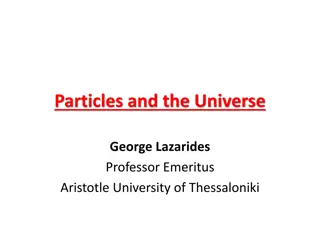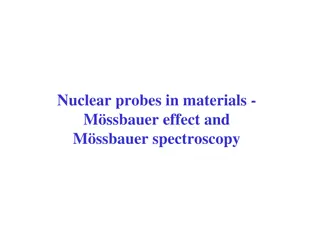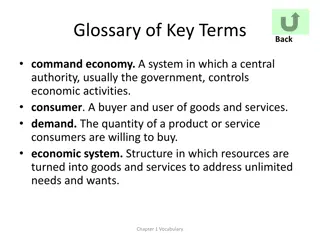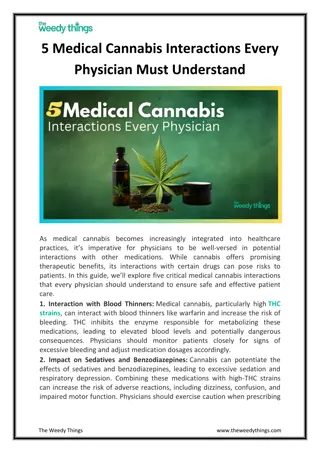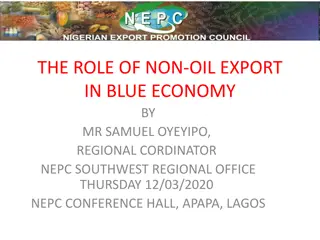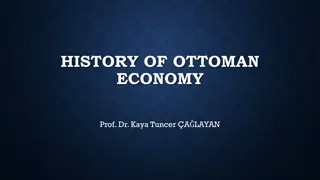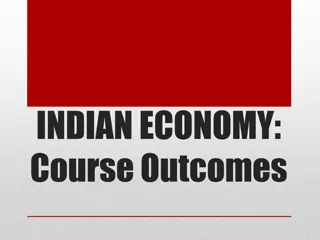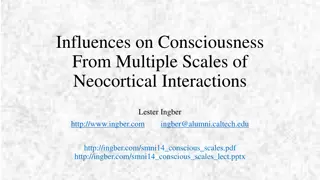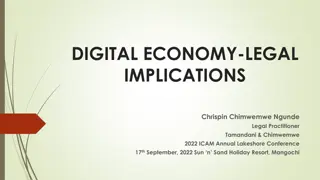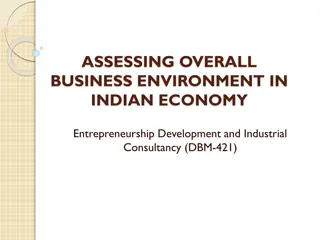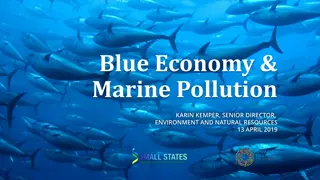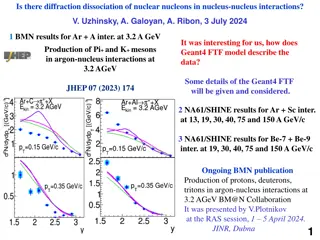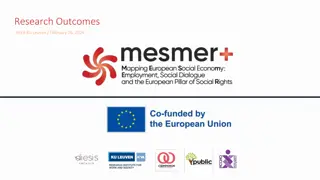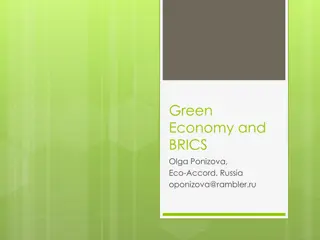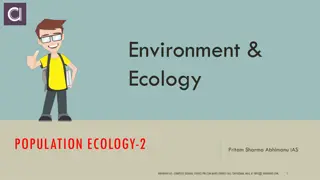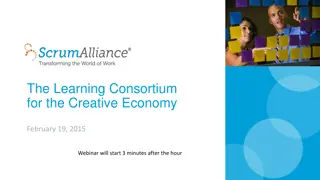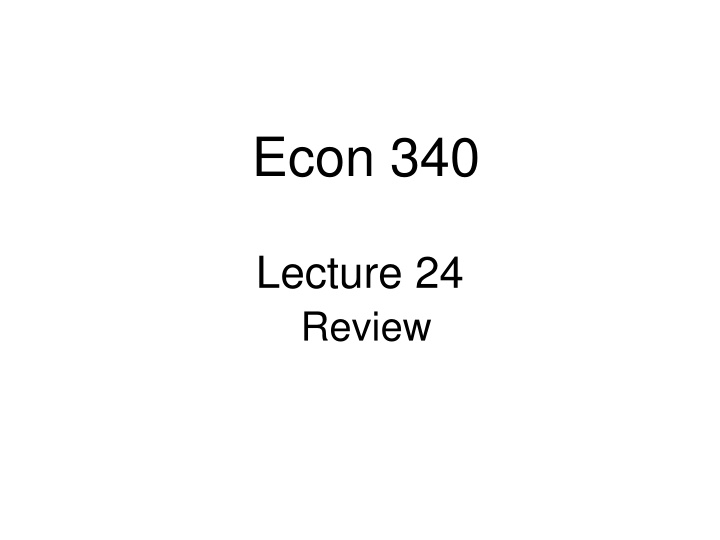
Overview of World Economy: Interactions and Influences
Delve into the changing elements of the global economy, trade dynamics, capital flows, and policies impacting nations. Explore key terms, acronyms, and current tensions shaping international trade.
Download Presentation

Please find below an Image/Link to download the presentation.
The content on the website is provided AS IS for your information and personal use only. It may not be sold, licensed, or shared on other websites without obtaining consent from the author. If you encounter any issues during the download, it is possible that the publisher has removed the file from their server.
You are allowed to download the files provided on this website for personal or commercial use, subject to the condition that they are used lawfully. All files are the property of their respective owners.
The content on the website is provided AS IS for your information and personal use only. It may not be sold, licensed, or shared on other websites without obtaining consent from the author.
E N D
Presentation Transcript
Econ 340 Lecture 24 Review
Lecture 24 Outline For each lecture: Outline Major questions Lists of Terms Acronyms (most are really Initialisms) Clicker questions Especially on graphs Econ 340, Deardorff, Lecture 24: Review 2
Lecture 1: Overview of the World Economy Overview of the World Economy Globalization Elements of the World Economy Ways that Countries Interact Trade Capital Flows Migration Policies that Affect Others Institutions What are the elements of the world economy? How have they changed? Who trades the most? Who trades with whom? Econ 340, Deardorff, Lecture 24: Review 3
Lecture 1: Overview of the World Economy Terms Globalization Openness Gross domestic product Regional trade agreement Capital flow Shallow integration Supply chain Emerging market Beggar they neighbor Bretton Woods Acronyms CIA IMF WTO GATT IBRD FDI RTA NAFTA SDR Econ 340, Deardorff, Lecture 24: Review 4
Clicker Question Where does the largest share of Michigan s imports come from? a) Canada b) China c) Mexico d) European Union 5
Clicker Question Compared to the 1940s, US tariffs today (as of 2017) are? a) Higher b) About the same, on average c) Half as large d) Only about 1/10 as large e) Gone 6
Lecture 2: Current Tensions in the International Economy NAFTA Brexit Trade War Metals China Other? WTO Currencies What tensions do these refer to? What tariffs were levied? On what? On whom? How big? What tariffs were threatened but not (yet) levied? Econ 340, Deardorff, Lecture 24: Review 7
Lecture 2: Current Tensions in the International Economy Terms Rules of origin Brexit (& No Deal Brexit) Hard border Irish backstop Trade war Truce National security Developing country Appellate body Currency manipulation Joint venture Section 301 Econ 340, Deardorff, Lecture 24: Review Acronyms NAFTA ROOs USMCA EU WTO 8
Clicker Question What is a Rule of Origin? a) A prohibition on employing illegal immigrants b) A requirement for registering to vote c) A restriction on who can invest in a country d) A specification of what qualifies for zero tariff e) A law against exporting imitations Lecture 2: Tensions 9
Clicker Question What reason is given for Trump s tariffs on China? a) That imports are hurting US producers b) National security c) Unfair acquisition of intellectual property d) Dumping e) China s trade surplus Lecture 2: Tensions 10
Clicker Question What reason is given for Trump s threatened tariffs on cars? a) That imports are hurting US producers b) National security c) Unfair acquisition of intellectual property d) Dumping e) China s trade surplus Lecture 2: Tensions 11
Lecture 3: Comparative Advantage and the Gains from Trade Why Countries Trade Price Differences Supply and Demand Determinants of Prices Ricardian Model of Trade Examples Wages and Prices in the Ricardian Model Lessons from the Ricardian Model Generality of the Gains from Trade Identifying Comparative Advantage Critiques of Comparative Advantage How do you define comparative advantage? How does Ricardian theory reassure a low-productivity country? How does Ricardian theory reassure a high-wage country? Econ 340, Deardorff, Lecture 24: Review 12
Lecture 3: Comparative Advantage and the Gains from Trade Terms Absolute advantage Comparative advantage Opportunity cost Consumer surplus Producer surplus Productivity Trade adjustment assistance Autarky Ricardian model Protection Mercantilism Econ 340, Deardorff, Lecture 24: Review 13
Clicker Question For the countries and technologies in the table below, which country has a comparative advantage in good X? a) A b) B c) Both d) Neither Good X Labor per unit output Country A 2000 3000 10 B Y 20 2000 10 = 200 > 150 =3000 Or 2000 3000= 2/3 > 1/2 =10 20 Econ 340, Deardorff, Lecture 24: Review 20 14
Clicker Question For the countries and technologies in the table below, which country has a comparative advantage in good X? a) A b) B c) Both d) Neither Good X Output per unit labor Country A 2.5 2000 1000 > B 3.5 < Y ??? ? ???? ?????? ???. ??? ?? ?? ???????? ?????????. Econ 340, Deardorff, Lecture 24: Review 15
Clicker Question For the countries and technologies in the table below, which country has a comparative advantage in good X? a) A b) B c) Both d) Neither Good X Output per unit labor Country A 2.0 2000 1000 B 1.5 Y 1.5 2.0= 0.75 > 0.5 =1000 2000 Econ 340, Deardorff, Lecture 24: Review 16
Lecture 4: Modern Theories and Additional Effects of Trade Sources of Comparative Advantage The Heckscher-Ohlin Model Main Idea Intuition Does the Theory Work? Effects of Trade Changes in Production Factor Price Equalization The New Trade Theory Assumptions Implications The New New Trade Theory Why is comparative advantage a double comparison? How do these theories differ in their assumptions? How do they differ in their implications? Econ 340, Deardorff, Lecture 24: Review 17
Lecture 4: Modern Theories and Additional Effects of Trade Terms Scale economies Factor of production Factor intensity Scarce factor Heckscher-Ohlin Theorem Stolper-Samuelson Theorem Leontief Paradox Imperfect competition Product differentiation Terms Intra-industry trade Strategic trade policy Heterogeneous firms Increasing returns to scale Intra-firm trade Capital-intensive industry Acronyms IIT Econ 340, Deardorff, Lecture 24: Review 18
Clicker Question In the Heckscher-Ohlin Model, what would cause a country to export the capital- intensive good? a) The country is small b) The country is large c) The country has relatively little capital d) The country has relatively a lot of capital ? ?? ?? ? ? ?????? ?? ? ??? ? ????? Econ 340, Deardorff, Lecture 24: Review 19
Clicker Question If a country has relative little labor compared to other factors and it opens to trade, what will happen to the real wage in the Heckscher-Ohlin Model? a) Rise b) Fall c) Remain unchanged d) It s not possible to tell ? ?? ?? ? ? ??????? ????????? ? ????? Econ 340, Deardorff, Lecture 24: Review 20
Lecture 5: Tariffs What Are They? Who Uses Them? Effects of Tariffs Small Country Case Effects on quantities and prices Effects on economic welfare Large Country Case Effect on world price Effect on welfare Size of These Effects Addenda on Tariffs Who gains and who loses from a tariff? Be able to analyze all of these cases. Econ 340, Deardorff, Lecture 24: Review 21
Lecture 5: Tariffs Terms Ad valorem Specific tariff Chicken tax Dead-weight loss Large country case Optimal tariff Terms of trade Partial equilibrium Homogeneous product Effective protection Retaliation Acronyms DWL ERP Econ 340, Deardorff, Lecture 24: Review 22
Clicker Question In the graph, initial price is PW and quantities are S0 and D0. A tariff t is then applied to imports. For which supply curve is the dead-weight loss the largest? a) SA b) SB c) SC d) They are the same P SA SB SC PW+t PW D Q D0 S0 Econ 340, Deardorff, Lecture 24: Review 23
Clicker Question Same graph. For which supply curve is the gain to suppliers the largest? a) SA b) SB c) SC d) They are the same P SA SB SC PW+t PW D Q D0 S0 Econ 340, Deardorff, Lecture 24: Review 24
Clicker Question Same graph. For which supply curve is the loss to demanders the largest? a) SA b) SB c) SC d) They are the same P SA SB SC PW+t PW D Q D0 S0 Econ 340, Deardorff, Lecture 24: Review 25
Lecture 6: Nontariff Barriers What Are NTBs? Quotas Effects Equivalent to Tariffs Who Gets the Rents Other NTBs Tariff-Rate Quotas Voluntary Export Restraints (VERs) Variable Levies Government Procurement Regulations Customs Procedures Standards Unfair Trade Laws Export taxes Subsidies What are these? How are they like tariffs? How are they different? Econ 340, Deardorff, Lecture 24: Review 26
Lecture 6: Nontariff Barriers Terms Import quota Quota rent Tariff equivalent Import license Auction of quota Rent seeking Quality upgrading Tariff-rate quota Common Agricultural Policy Buy American Customs procedure Terms Variable levy Anti-dumping duty Countervailing duty Export tax Subsidy Procurement regulation Acronyms NTB NTM TRQ VER CAP Econ 340, Deardorff, Lecture 24: Review 27
Clicker Question Suppose that imports of a good are limited by a binding quota. If the quota is now decreased in size, which of the following will fall? a) Domestic price b) Quantity supplied domestically c) Quantity demanded domestically d) Producer surplus e) The tariff equivalent of the quota Econ 340, Deardorff, Lecture 24: Review 28
Clicker Question In the presence of a binding quota, which of the following will cause the tariff equivalent of the quota to fall? a) A fall in the world price b) A decrease in the size of the quota c) A rightward shift of the domestic demand curve d) A rightward shift of the domestic supply curve S S Econ 340, Deardorff, Lecture 24: Review 29
Lecture 7: Reasons for Protection Reasons that DO NOT Make Economic Sense Pauper Labor Fairness Patriotism Retaliation Reasons the DO Make Economic Sense, with Counter-Arguments Revenue Optimal Tariff Infant Industry National Security Culture Unfair Trade Protect Favored Industry Retaliation Production Subsidy versus Tariff Why Aren t Tariffs Higher? What are these reasons? Are there counter- arguments for them? Econ 340, Deardorff, Lecture 24: Review 30
Lecture 7: Reasons for Protection Terms Pauper labor Optimal tariff Zero-sum game Infant industry National security Retaliation Protection for Sale Second best Economic sanction Political economy Acronyms GATT Econ 340, Deardorff, Lecture 24: Review 31
Clicker Question If another country taxes our exports, how does this change the benefit of our taxing imports from them? a) It doesn t change it b) It increases the benefit from our tax c) It decreases the benefit from our tax d) Whether the benefit from our tax rises or falls depends on whether our imports are greater or smaller than our exports
Clicker Question Why is a tariff a second best way to raise revenue for the government? a) A tariff, like any tax, distorts markets b) It could raise more revenue at less economic cost with another policy c) The country would be better off with less revenue and a smaller government d) An import quota, if auctioned off, would raise more revenue with the same reduction in imports e) If the country is large, the tariff will reduce the world price
Lecture 8: US Trade Policies and Institutions Parts of the US Government that Handle Trade Main Features of US Trade Policies Tariffs, Quotas, VERs Escape Clause Unfair Trade Laws Trade Adjustment Assistance Fast Track GSP Dumping and Anti-Dumping Why the US Protects Trends in US Trade Policy What are these and what do they do? What are these? Do other countries have them too? What are dumping and anti-dumping ? Econ 340, Deardorff, Lecture 24: Review 34
Lecture 8: US Trade Policies and Institutions Terms Trade Commissioner Ways and Means Finance Committee Columns 1 and 2 Trade restrictiveness index Escape clause Section 201 Unfair trade Trade Adjustment Assistance Predatory dumping Econ 340, Deardorff, Lecture 24: Review Terms Wage insurance Fast Track Dumping Countervailing duty Industrial policy Standing Acronyms METI USTR ITA USITC VER TAA ATAA TPA TPP GSP CVD MFA 35
Clicker Question If a US industry wants to get higher tariffs on imports, which of the following might allow it to get that? a) The Anti-Dumping statute b) The Escape Clause c) The Countervailing Duty law d) All of the above e) None of the above
Clicker Question Which of the following is considered dumping? a) The US sends used plastic to be recycled in China b) The Chinese government keeps prices of raw materials low by taxing their export c) Canada subsidizes the production of lumber for export d) A Japanese maker of cameras, protected by a tariff, sells them in the US for less than at home e) A power plant in Germany releases industrial waste into the Rhine River, which flows into the Netherlands
Lecture 9: World Trade Arrangements and the WTO International Organizations World Trade Organization History, as GATT GATT Rounds WTO Today Functions Current Issues Seattle Protests and Beyond Doha Round Disputes Other Issues WTO Critiques What does the WTO do? How successful has it been? Econ 340, Deardorff, Lecture 24: Review 38
Lecture 9: World Trade Arrangements and the WTO Terms Smoot-Hawley Tariff Ministerial meeting Rounds (Kennedy, Tokyo, Uruguay, Doha) Swiss Formula National treatment Consensus Dispute settlement Tariff binding Panel Appellate Body Terms Plurilateral agreement Market-economy status Shrimp-turtle dispute Principal supplier and demander World Bank Trade facilitation Acronyms GATT WTO OECD EU NAFTA USMCA UNCTAD ILO WIPO NGO ITO GATS TRIPs MFN Econ 340, Deardorff, Lecture 24: Review 39
Clicker Question What is a tariff binding? a) A tax on imports of adhesives b) A commitment not to raise a tariff above some maximum c) A commitment not to lower a tariff below some minimum d) A promise by two countries to reduce tariffs on each others exports e) The WTO rule that countries must not charge higher tariffs on some members than on others
Clicker Question Why does China want to be treated as a market economy? a) This would make it exempt from other countries tariffs b) It s a matter of national pride, as this was an objective of Chairman Mao c) Market-economy status would allow it to subsidize exports d) Market-economy status would lead to smaller anti- dumping duties against it e) International banks refuse to lend to firms in a non- market economy
Lecture 10: Migration Why People Migrate Why Wages Differ across Countries Effects of Migration On Payments to Factors Labor Other Other Effects Policies to Affect Migration Facts about Migration How is migration like trade? How is it not like trade? Econ 340, Deardorff, Lecture 24: Review 42
Lecture 10: Migration Terms Intangible wealth Infrastructure Property rights Remittances Population pyramid Guest worker South-south migration Brain drain Demand-pull vs. supply- push Econ 340, Deardorff, Lecture 24: Review 43
Clicker Question In the graph below, showing migration from Mexico to the U.S., which area shows the gain to Mexican workers who don t migrate? a) a b) b c) c d) d e) e Mexico SM1 U.S. wM wU SM0 SU0 SU1 d e c DU a b DM L L L + L Econ 340, Deardorff, Lecture 24: Review 44
Clicker Question Same graph. Which areas show the gain to US factors other than labor? a) a+b b) b+c c) c+d d) d+e e) e+a Mexico SM1 U.S. wM wU SM0 SU0 SU1 d e c DU a b DM L L L + L Econ 340, Deardorff, Lecture 24: Review 45
Lecture 11: Multinationals and International Capital Movements Terminology FDI, DFI, MNEs, MNCs Real Versus Financial Capital History Purposes Served by FDI Local Market versus Export Reasons for FDI Who Gains and Who Loses? Effects that are Similar to Trade Effects that are Similar to Migration Other Effects How is FDI like trade? How is it not like trade? How is FDI like migration? How is it not like migration? Who are mostly sources? Who are mostly hosts? Econ 340, Deardorff, Lecture 24: Review 46
Lecture 11: Multinationals and International Capital Movements Terms Foreign direct investment Capital flow Source country Host country Export platform Tariff jumping Transplants Acronyms DFI FDI MNE MNC TNC MOFA=Majority-owned foreign affiliate Econ 340, Deardorff, Lecture 24: Review 47
Clicker Question The diagram shows supply and demand for labor in a country. Which of these curves will shift, and in which direction, if there is FDI into the country? a) Supply shifts right b) Supply shifts left c) Demand shifts right d) Demand shifts left wage S0 w1 w0 D1 D0 Labor Econ 340, Deardorff, Lecture 24: Review 48
Lecture 12: The Balance of Trade and International Transactions What Is the Balance of Trade? What the Balance of Trade Does Not Mean International Transactions Current Account Financial Account What the Balance of Trade Does Mean From Balance of Payments Accounting From National Income Accounting How do transactions enter the accounts? What does a deficit really mean? Econ 340, Deardorff, Lecture 24: Review 49
Lecture 12: The Balance of Trade and International Transactions Terms Trade balance Current account Financial Account Transfer payments Credits Debits Primary income Secondary income Statistical discrepancy Recession Terms Investment position Plaza Accord Official reserve assets Odious debt Econ 340, Deardorff, Lecture 24: Review 50


